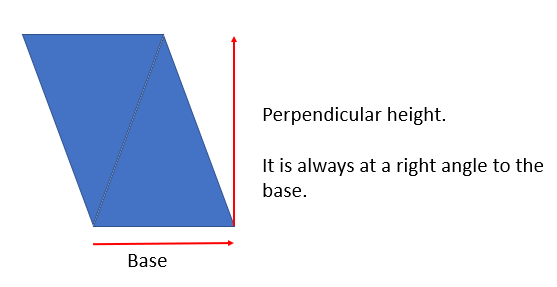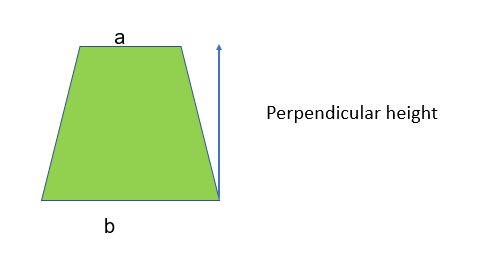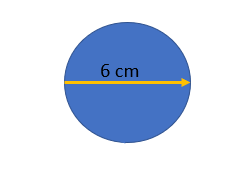Area of Shapes
Triangles
To find the area of a triangle use the formula:
1/2 x perpendicular height x base or (perpendicular height x base)/2
1/2 x h x b or (h x b)/2
Remember - always use the perpendicular height!
Parallelograms
The area of a parallelogram is the perpendicular height x base.
(If you double a triangle you get a parallelogram!)
Trapeziums
To find the area of a trapezium:
- Step 1: Label the parallel lines a and b ( it doesn’t matter which way round)
- Step 2: Add them together and divide by two ( here you’re finding the average of the lengths)
- Step 3: Multiply by the height
__Area of a trapezium __= 1/2 (a +b) x h
Be prepared to work through this equation backwards.
Eg. A trapezium has an area of 40 cm2 one parallel line with a length of 4 and a height of 8. What is the length of the other parallel line:
Input what we know into the formula:
Area= 1/2 (a+b) x h
40 = 1/2 (4+b) x 8
40 = 4(4+b)
10 = 4 +b
6 = b
Area of a circle
To work out the area of the circle use this formula:
Area of a circle = π x radius x radius = πr^2
For example:
Be careful!! Here we have been given the diameter! This is double the radius, we will have to halve it for our formula to work:
= πr2
= π32
= 9π
= 28.27 (2 decimal places)
- The area of a circle is 16π what is the radius?
- 4
- What do the a and b refer to on the formula used to work out the area of a trapezium?
- Parallel



